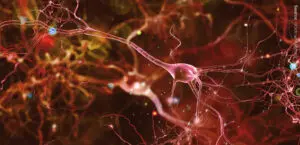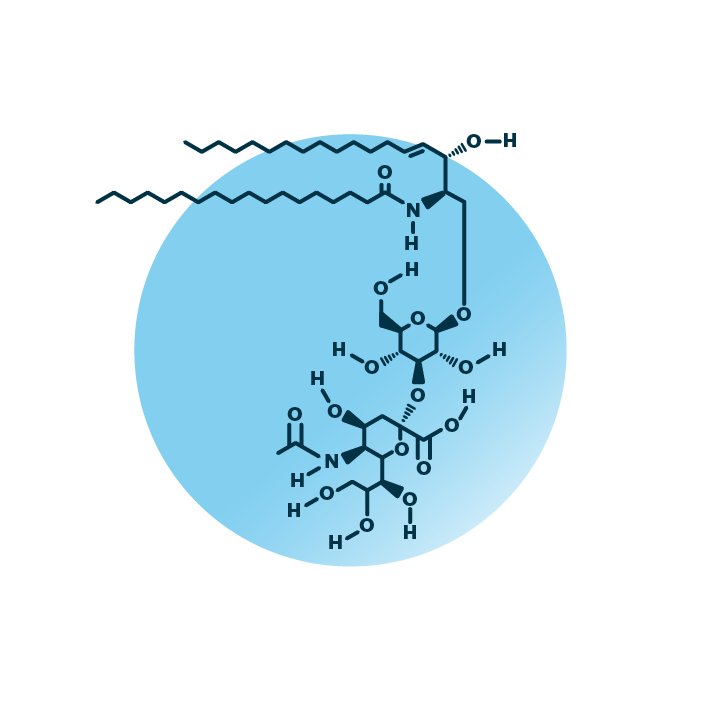About the structure and biological function of GM4
Structure. GM4 ganglioside lipids belong to the group of gangliosides within the sphingolipids. Their structure consists of a ceramide backbone linked to a disaccharide unit. One of them is a sialic acid. The ceramide backbone contains two hydrocarbon chains: a long-chain base which is linked to a fatty acid via an amide bond. The fatty acid and the long-chain base can be of variable length, hydroxylated, and contain double bonds.
Function. Little is known about the function of GM4 gangliosides in vertebrates but they have been found to be a major ganglioside within myelin, the insulating layer that is produced by oligodendrocytes and forms around the axons of neurons. GM4 lipids are increased in the frontal cortex of Alzheimer’s patients. Further, GM4 supports oligodendrocyte proliferation, a process that is important for remyelination of demyelinated neurons and is impaired in multiple sclerosis.


